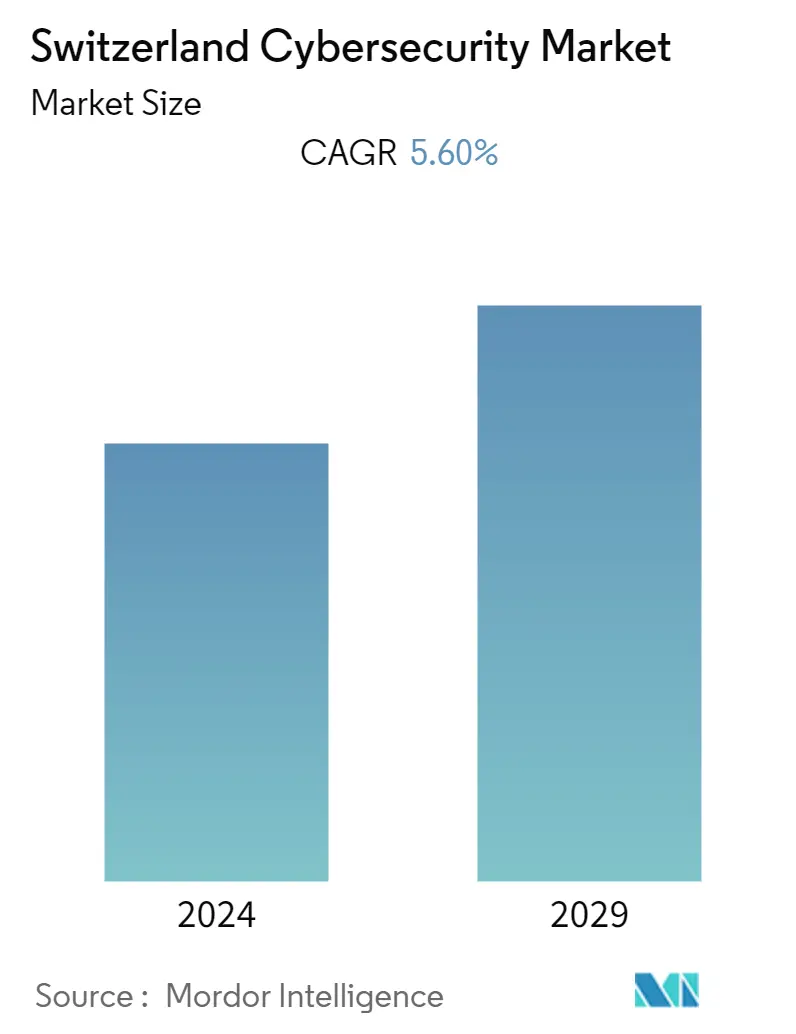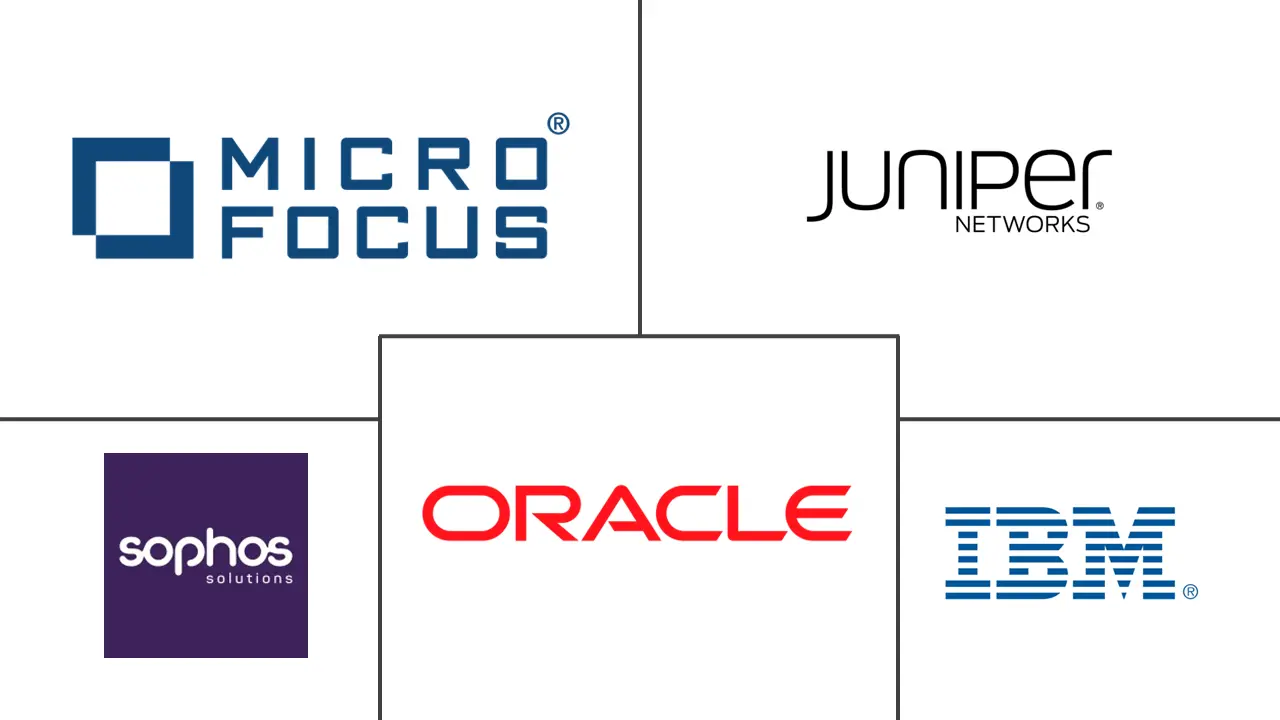Market Size of Switzerland Cybersecurity Industry

| Study Period | 2019 - 2029 |
| Base Year For Estimation | 2023 |
| Forecast Data Period | 2024 - 2029 |
| Historical Data Period | 2019 - 2022 |
| CAGR | 5.60 % |
| Market Concentration | Medium |
Major Players
*Disclaimer: Major Players sorted in no particular order |
Need a report that reflects how COVID-19 has impacted this market and its growth?
Switzerland Cybersecurity Market Analysis
The Switzerland Cybersecurity Market is anticipated to grow with a CAGR of 5.6% during the forecast period (2022 - 2027). Large business enterprises are implementing more data-based AI solutions for everything from security to sales, and cybersecurity experts have turned to geospatial data to shore up the lines of defense. Systems companies can strengthen emergency management, national intelligence, infrastructure protection, and national defense platforms by implementing geospatial data into pre-existing security.
- In keeping with its humanitarian heritage, Switzerland is actively advancing global cybersecurity and encouraging the responsible use of ICT. Numerous organizations, including the Internet Society, Internet Governance Forum (IGF), DiploFoundation, International Telecommunication Union (ITU), ICT-4Peace, and WEF Cyber Security Center, are based in the nation. The "Trust Valley," a center of excellence in digital trust and cybersecurity, was established by the Cantons of Vaud and Geneva to foster the creation of novel enterprises and build a unique environment.
- The service providers in the market are trying to offer a customized solution, either remotely or on-premise. These services include assistance at the time of solution integration, and data migration, among others. It also helps review the current architecture, use cases, and company goals, so the organization stays aligned with its current needs. Furthermore, professional services support various types of cybersecurity services to organizations, such as integration and maintenance of cybersecurity solutions, employee security training, and consulting, which include defining strategies, deployment of the right solution, augmentation in key areas, and elevated data protection strategies, among various others.
- Moreover, public and private banking institutions are concentrating on using the most recent technology to thwart cyber attacks as part of a strategy to safeguard their IT processes and systems, essential client data, and comply with regulatory requirements. Additionally, banking institutions are under pressure to adopt a proactive security posture due to increased client expectations, technology advancements, and regulatory obligations. With the increasing use of technology and digital channels like internet banking, mobile banking, etc., online banking has emerged as the customer's first choice for financial services. Banks must make extensive use of sophisticated authentication and access control procedures.
- In September 2022, The National Cyber Security Centre (NCSC) of Switzerland declared the beginning of a brand-new bug bounty program for the federal government. In a 2021 pilot project, six IT systems from the Swiss parliamentary services and the Federal Department of Foreign Affairs, FDFA, were examined for security flaws by ethical hackers. The project found ten vulnerabilities: one critical, seven medium, and two minor. As a result, several federal agencies were added to the program under the direction of the NCSC.
- The range of cyber threats has expanded due to the rise in remote connections and work from home. For instance, 76% of respondents to the IBM Security Report 2020 stated that working remotely would lengthen the time needed to detect and contain a potential data breach. It was shown that a remote workforce increased the average cost of a data breach from USD 3.86 million to USD 4 million, an increase of over USD 137,000.
